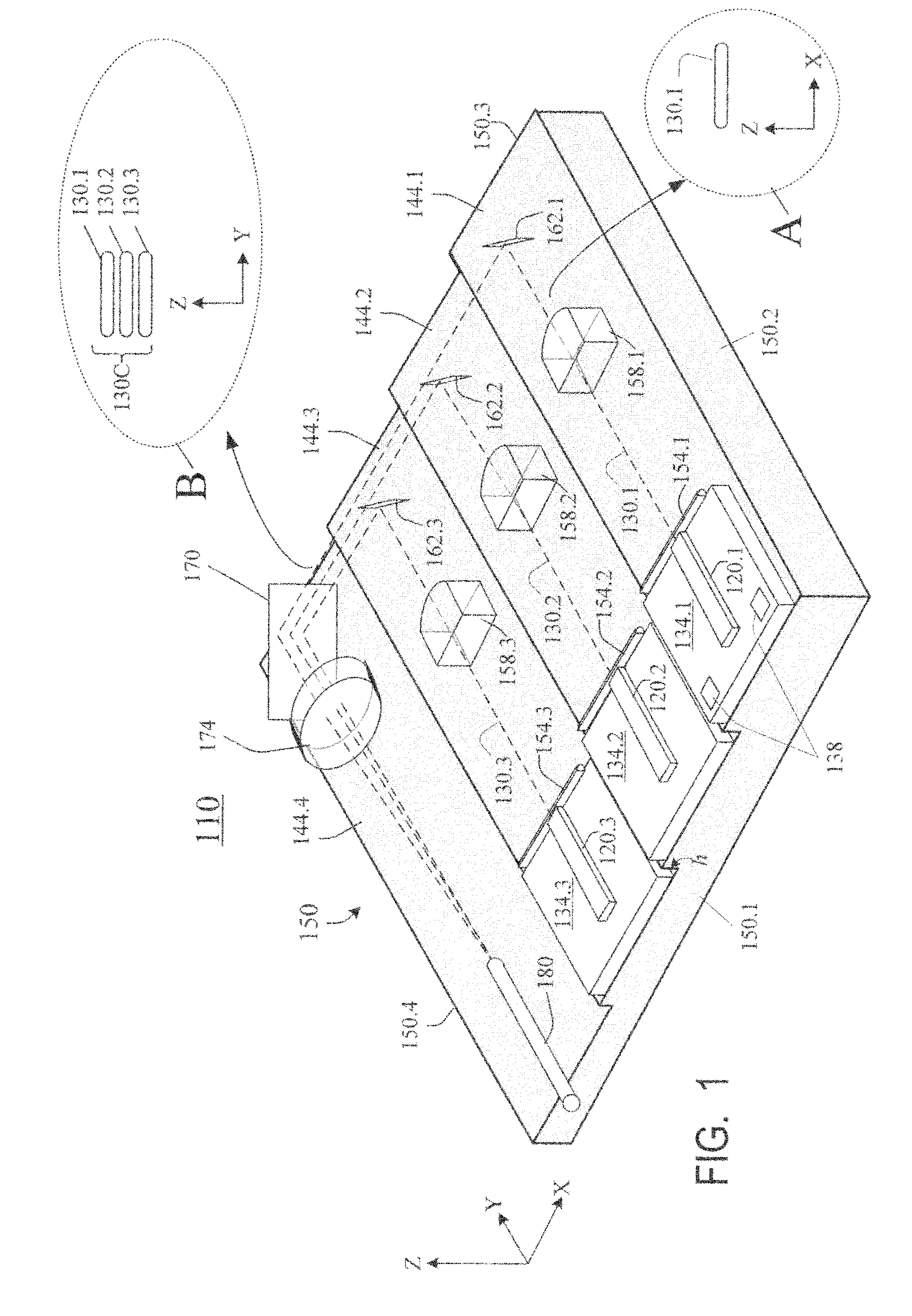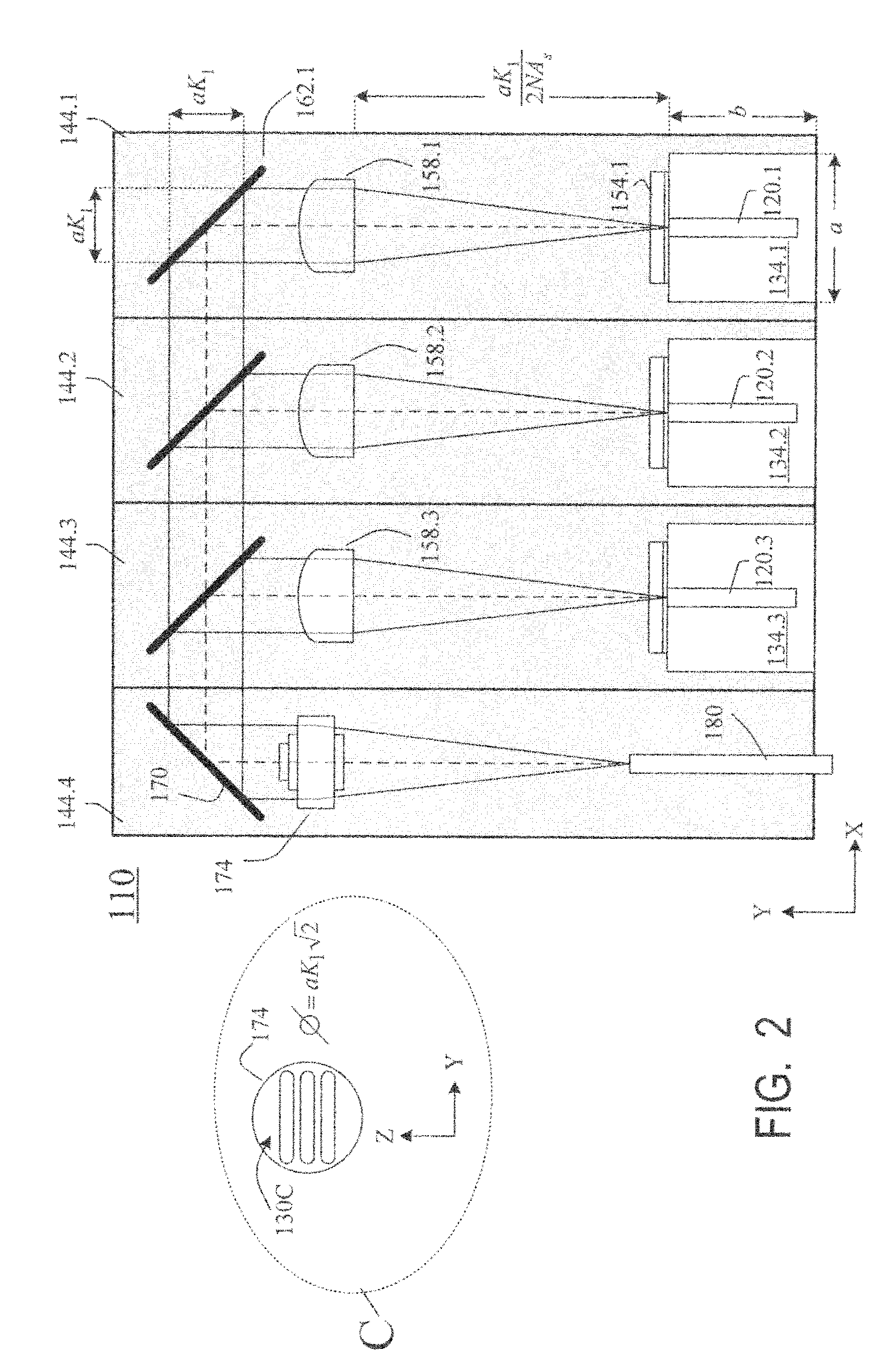Laser diode assemblies
a technology of laser diodes and assemblies, applied in semiconductor lasers, instruments, optical elements, etc., can solve the problems of reducing the coupling efficiency between reducing the coupling efficiency of laser diodes and optical fibers, and underutilizing the input area of fibers, so as to reduce misalignment and high heat conductivity
- Summary
- Abstract
- Description
- Claims
- Application Information
AI Technical Summary
Benefits of technology
Problems solved by technology
Method used
Image
Examples
Embodiment Construction
[0017]The embodiments described in this section illustrate but do not limit the invention. The invention is defined by the appended claims.
[0018]FIG. 1 is a perspective view of a laser diode assembly 110 according to some embodiments of the present invention. FIG. 2 is a top view of the assembly. FIG. 3 is a perspective view of assembly 110 with packaging used in some embodiments. The assembly will be described with reference to a Cartesian coordinate system XYZ where X and Y are horizontal axes and Z is vertical. However, the invention is not limited by any coordinate system, and further the assembly 110 can be oriented and operated in any position.
[0019]Assembly 110 includes three laser diodes 120.1, 120.2, 120.3 laterally spaced from each other in the X direction. Any number of diodes can be present. In this embodiment, each diode 120.i (i=1, 2, 3) is a single-emitter diode, formed in a discrete semiconductor structure, but this is not necessary for the invention. Diodes 120 have...
PUM
| Property | Measurement | Unit |
|---|---|---|
| angle | aaaaa | aaaaa |
| angles | aaaaa | aaaaa |
| angle | aaaaa | aaaaa |
Abstract
Description
Claims
Application Information
 Login to View More
Login to View More - R&D
- Intellectual Property
- Life Sciences
- Materials
- Tech Scout
- Unparalleled Data Quality
- Higher Quality Content
- 60% Fewer Hallucinations
Browse by: Latest US Patents, China's latest patents, Technical Efficacy Thesaurus, Application Domain, Technology Topic, Popular Technical Reports.
© 2025 PatSnap. All rights reserved.Legal|Privacy policy|Modern Slavery Act Transparency Statement|Sitemap|About US| Contact US: help@patsnap.com



